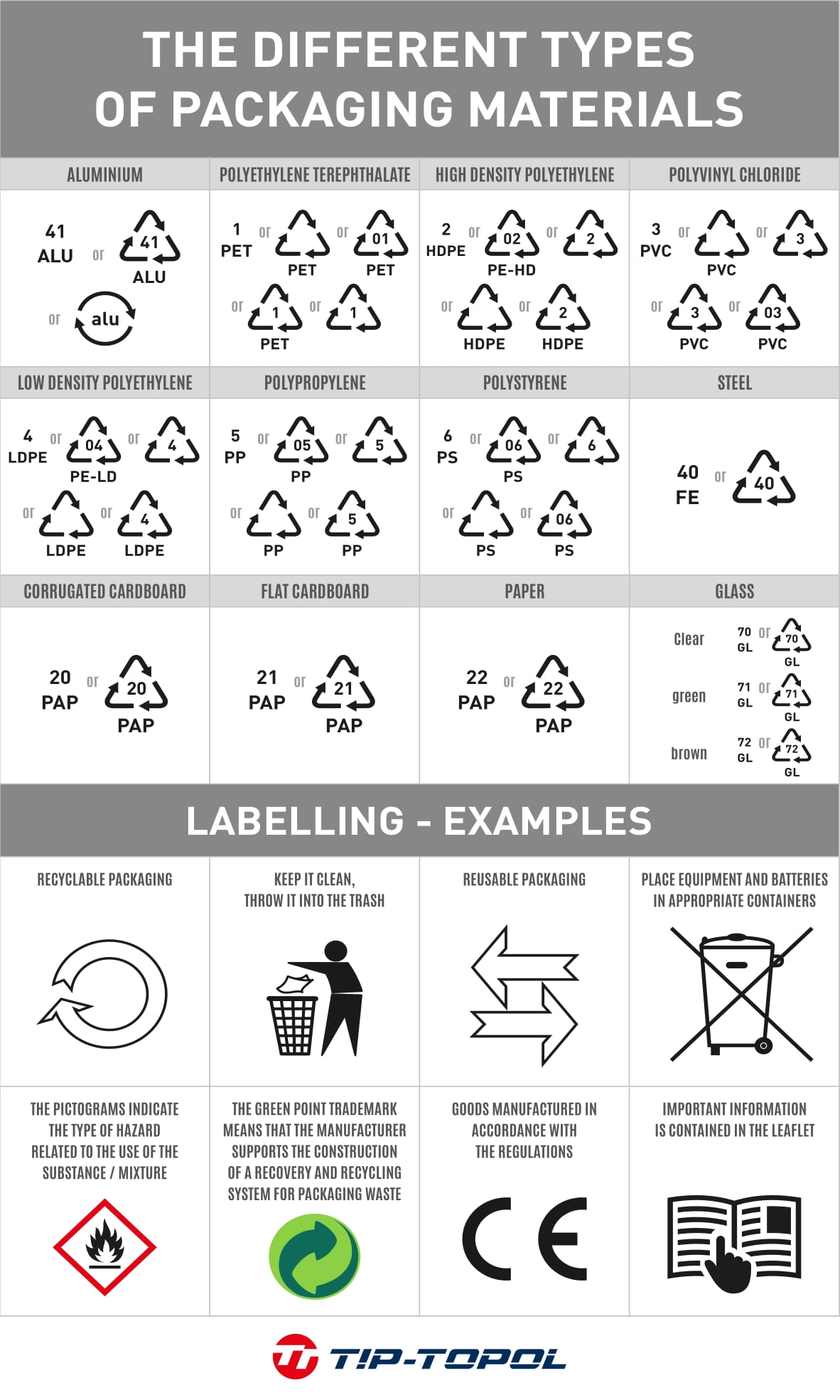PACKAGING
Information on packaging and waste packaging
1. Proper handling of packaging waste.
Household
Packaging waste should be collected for each type of packaging. Packaging should be empty and crushed, if possible, in order to reduce their volume.
The fractions of: paper, glass, metals and plastics are selectively collected.
Paper and cardboard packaging waste is collected in blue containers marked "Paper"
Glass packaging waste is collected in green containers marked "Glass".
Metal, plastic and multi-material packaging wastes are collected in yellow containers marked "Metals and plastics".
Business entities
Packaging waste generated in the course of business activity should be classified as waste other than municipal waste, according to the waste catalog in the subgroup 15 01 - Packaging waste. This type of waste should be collected separately from municipal waste and handed over to authorized entities using a waste transfer note.
2. Available return, collection and recovery systems, including recycling of packaging waste.
Packaging waste should be handed over into fractions in accordance with the regulations in force at the place where the packaging waste is generated. Packaging waste is collected:
- directly from households,
- at PSZOK points (separate municipal waste collection points),
Information on the waste collection schedule, location of the PSZOK and waste collection hours can be found, among others, on the websites of municipal offices and cities, intercommunal associations or waste collection companies.
Additionally:
- A retail or wholesale company selling dangerous phytosanitary products, is required to collect the packaging waste from users of these products.
The user of hazardous phytosanitary products has to return the packaging waste after these products to the seller.
- An entrepreneur running a retail unit with a retail area exceeding 2,000 m2 is required, at his own expense, to separately collect product packaging waste in the commercial offer of this unit, according to the types of packaging from which the waste came.
3. The meaning of the markings used on the packaging.
To facilitate collection, reuse and recovery, including recycling, packaging shall indicate the type of packaging material used for identification and classification by the relevant industry. The numerical designations used shall be: 1 to 19 for plastics, 20 to 39 for paper and cardboard, 40 to 49 for metals,
50 to 59 for wood, 60 to 69 for textile packaging, 70 to 79 for glass packaging. The identification system may also use the abbreviation for the relevant material (eg HDPE: high density polyethylene).
Materials may be marked with a numeric identification system and/or abbreviations. The identification markings are placed in the middle of, or underneath, the graphical markings indicating the reusability or recoverability of the packaging. The table below shows examples of markings used on packaging.



